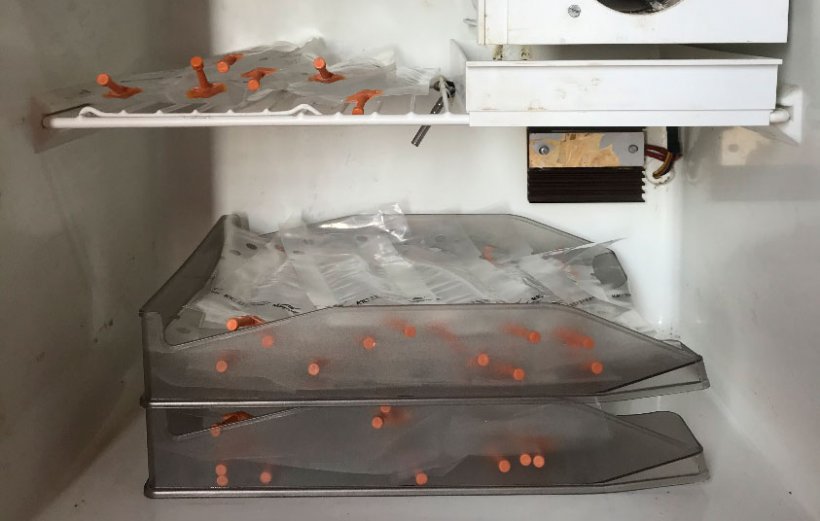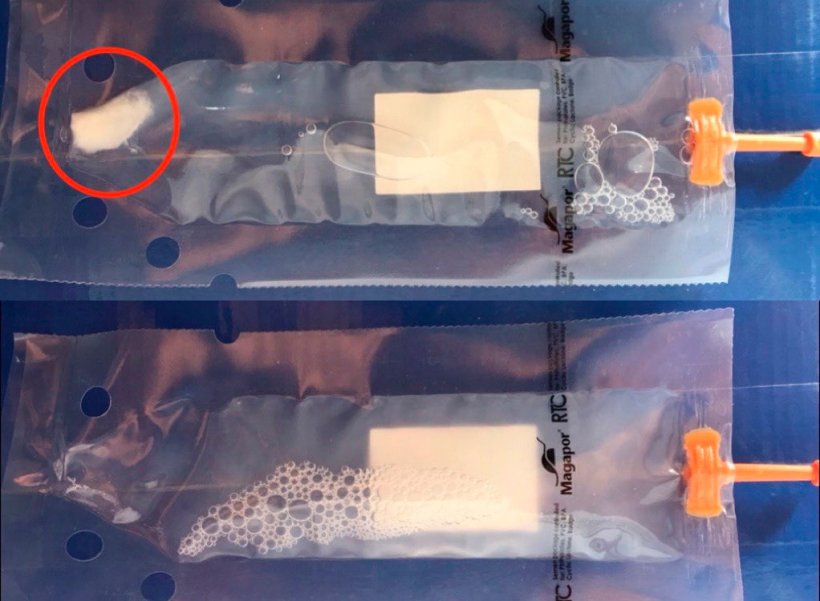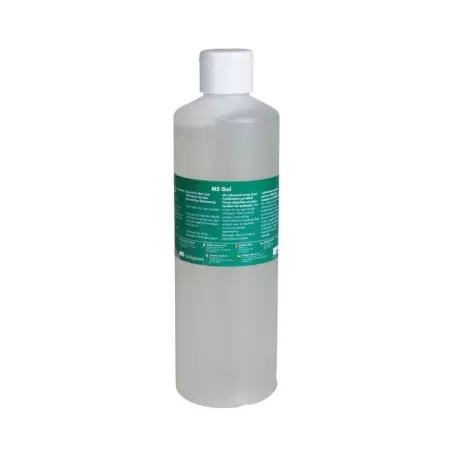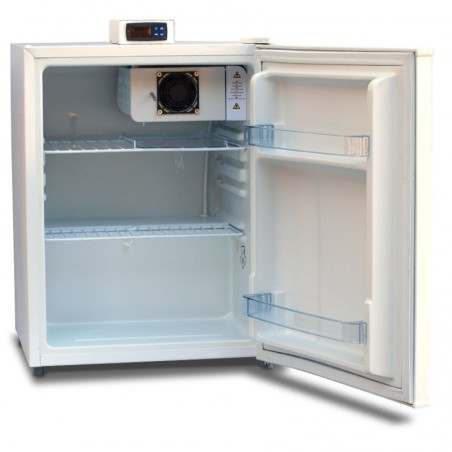What volume and concentration are appropriate for semen doses?
During the research period, prior to the implementation of the technique at field level, we wanted to know what the lower limit was that would still ensure satisfactory levels of fertilization. We inseminated batches of sows with 3 ml doses and a concentration of 100 million viable spermatozoa which, once filled into the post cervical cannula, were pushed with another 15 ml of diluent to ensure that the entire dose reached the uterus, also ensuring a minimum volume with which the uterine mechanisms could mobilize the semen. Under these conditions, the same fertility was obtained as with the doses with a volume of 90 ml and 3 billion viable spermatozoa inseminated with the traditional technique, but nevertheless the prolificacy was reduced by 1.5 piglets total born, which showed us that we had reached the lower limit.

In routine insemination, a dose of 30-35 ml is more than adequate, and the volume can be increased to 45 ml to provide a margin of security- an extra that should not be necessary if all the steps in the insemination technique (described in more detail in previous articles) are carried out correctly.
"A poor insemination poses the risk of a return to estrus or a small litter size."
Using doses of more than 60 ml with the post cervical technique may cause a percentage of sows to develop a more aggressive uterine defense process than normal (by introducing a high volume directly into the uterus). This would result in a decrease in the number of piglets born, since when this physiological uterine defense process aimed at eliminating pathogens that come with the semen is exacerbated, it not only kills fungi and bacteria but also destroys spermatozoa. If this occurs on a widespread basis, it can reduce the number of fertilized oocytes due to a lack of viable sperm. This percentage of sows that exhibit an excessive uterine defense is highly dependent on the individual and general immune status of each individual farm.
This is more unlikely to occur in traditional (cervical) insemination, since the complete dose rarely reaches the uterus, because part of it can be lost by backflow and another part remains in the cervix.
In conclusion, the ideal dose is 45 ml, since it does not cause an excessive uterine defense and it gives confidence to the farmer, being more than enough to guarantee the best reproductive results.
What are the crucial points in semen storage?
First of all, the conditions under which the semen leaves the insemination centers and the temperature curve during transport are very important. Avoid having the doses leave the insemination center at high temperatures (above 24ºC) and try to keep them as close as possible to the equilibrium temperature of 16-17ºC upon leaving the center and during the whole journey, allowing, if necessary, the refrigeration process to continue until reaching 16-17ºC and avoid, in all cases, thermal oscillations and overheating. Many times, the problem is attributed to the semen storage on the farm when in reality the problem lies in its previous journey.

Photo 1. Placement of the doses in trays arranged one on top of the other in order to avoid inappropriate sedimentation of the spermatozoa and to facilitate periodic movement for homogenization.
Regarding semen storage on the farm, there are three factors to keep in mind:
- It is preferred that the refrigerator not be small and that it be kept at a temperature between 15ºC and 17ºC, avoiding placing the doses near the heating element and the freezer or the rear wall, depending on where the cold is produced, since these are areas with much more thermal fluctuation than the semen storage range.
- The placement of the doses is important. Avoid leaving them inside the delivery bag, because poor positioning of the dose can cause inappropriate sedimentation of the spermatozoa, preventing contact with the diluent, which can cause a loss of viability due to lack of nutrition for the spermatozoa and prevent them from being able to be detoxified, Therefore, it is best to place them flat on top of each other, and if they are tubes, one on top of the other in opposite directions. If they are blister packs in trays, they should be placed so that when the semen is decanted it remains on a wide surface and most of the spermatozoa are in contact with the diluent.
- The doses should be moved periodically and be homogenized before insemination.

Photo 2. At the top of the picture is a dose with seminal sedimentation, at the bottom is a correctly homogenized dose. This homogenization will prevent loss of sperm viability and promote better distribution of the sperm in the medium.
One of the key points for a successful insemination is the use of an adequate volume and dose of semen and ensuring optimal semen storage. The following article will discuss a number of important points in this phase of the sow's reproductive cycle that we always question, such as when to move the sow once inseminated and how to feed her during the estrus period.






